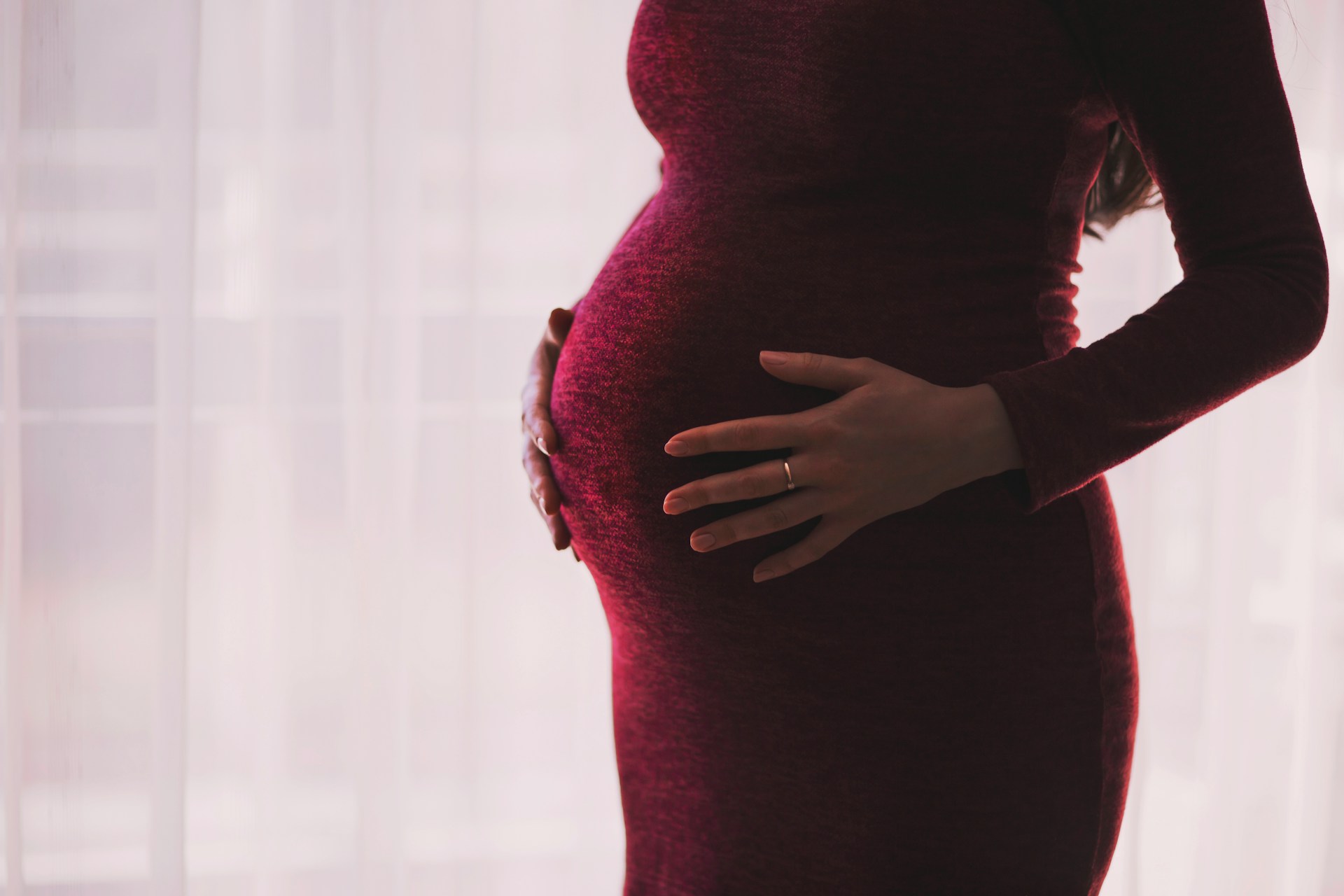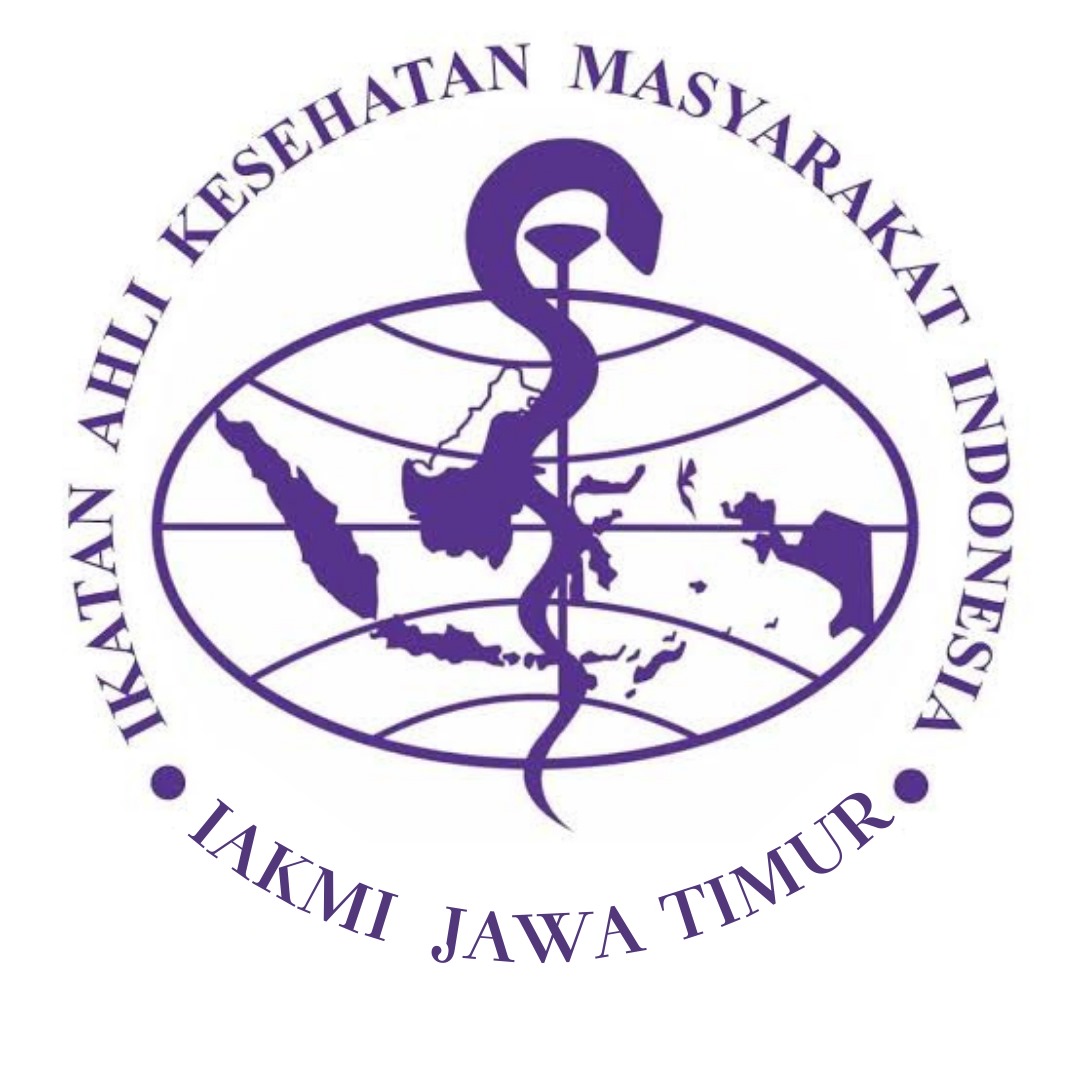Analysis of Determinants of Pregnant Women's Compliance in Consuming Iron Supplement Tablets and Its Association with Pregnancy Anemia

Downloads
Background: The distribution of iron tablets for women in pregnancy is the government's effort to provide the iron needs during pregnancy. The level of compliance among pregnant women in taking iron supplement tablets is still insufficient. Five out of ten women in pregnancy in Indonesia experience pregnancy anemia.
Objectives: This study aims to analyze five factors that influence the compliance behavior of women in pregnancy in consuming iron tablets for pregnant women, namely intention to act (Behavior intention), social support (Social-support), accessibility of information (Accessibility of information), personal autonomy (Personal Autonomy), and the situation that allows action (Action Situation).
Methods: The study was conducted using a mixed-method design (quantitative and qualitative). The quantitative study was conducted through a questionnaire survey and analyzed using Fisher’s Exact Test, while the qualitative study was conducted through focus group discussion (FGD) with midwives and in-depth interviews with women in pregnancy and midwives. The sample consisted of 31 women in pregnancy in the working area of the Kenjeran Health Center, Surabaya. The data collection method used was purposive sampling. The independent variable in this study was the compliance behavior of women in pregnancy in consuming iron tablets, while the dependent variables were based on Snehandu B. Karr's theory, which includes behavior intention, social support, accessibility of information, personal autonomy, and action situation.
Results: The quantitative results show that the variable accessibility of information has a significant relationship (p value=0.0376) and a positive effect (p value=0.0292 and OR=1.9630) on the compliance behavior of women in pregnancy in consuming iron tablets for pregnant women.
Conclusion: There is a need to increase the accessibility of information from health cadres to pregnant women.
Abidah, N. and Sumarmi, S. (2024) ‘A Comparison of Adherence Levels of Women in pregnancy to Consuming Multiple Micronutrient Supplements and Iron Folic Acid at Mulyorejo Public Health Center, Surabaya’, Amerta Nutrition, 8(1), pp. 17–25. https://doi.org/10.20473/amnt.v8i1.2024.17-25.
Anggraeni, N. and Muchtar, F. (2021) ‘Pengetahuan, Sikap dan Kepatuhan Mengonsumsi Tablet Tambah Darah (TTD) Pada Ibu Hamil Selama Masa Pandemi Covid-19’, Nursing Care And Health Technology, 1(3), pp. 144–154. https://doi.org/10.56742/nchat.v1i3.28
Asmin, E., Salulinggi, A., Titaley, C. R., & Bension, J. (2021). ‘Hubungan Pengetahuan Dan Kepatuhan Ibu Hamil Konsumsi Tablet Tambah Darah Dengan Kejadian Anemia Di Kecamatan Leitimur Selatan Dan Teluk Ambon’. Jurnal Epidemiologi Kesehatan Komunitas, 6(1), pp. 229-236. https://doi.org/10.14710/jekk.v6i1.10180
Aulia, D. T. et al. (2021). ‘Hubungan Antara Pengetahuan tentang Gizi dengan Kebiasaan Sarapan Pada Mahasiswa’. Jurnal Kedokteran Syiah Kuala, 21(2). https://doi.org/10.24815/jks.v21i2.19362
Badan Pusat Statistik (BPS). 2019. Bayi Berat Badan Lahir Rendah (BBLR) dan Bergizi Kurang di Provinsi Jawa Timur, 2019. Jakarta.
Elsharkawy, N.B. et al. (2022) ‘Effectiveness of Health Information Package Program on Knowledge and Compliance among Women in pregnancy with Anemia: A Randomized Controlled Trial’, International Journal of Environmental Research and Public Health, 19(5), p. 2724. https://doi.org/10.3390/ijerph19052724
Kementerian Kesehatan (2014) Peraturan Menteri Kesehatan Republik Indonesia Nomor 97 Tahun 2014. Jakarta.
Kementerian Kesehatan (2018) Laporan Riskesdas 2018 Nasional. Jakarta.
Kementerian Kesehatan (2019) Profil-Kesehatan-Indonesia-2019. Jakarta. Available at: https://www.kemkes.go.id/id/profil-kesehatan-indonesia-2019 (Accessed: 25 October 2024).
Kementerian Kesehatan (2020) Profil Kesehatan Indonesia Tahun 2020. Jakarta. Available at: https://www.kemkes.go.id/id/profil-kesehatan-indonesia-2020 (Accessed: 25 October 2024).
Kementerian Kesehatan (2021) Profil Kesehatan Indonesia. Jakarta. Available at: https://www.kemkes.go.id/id/profil-kesehatan-indonesia-2021 (Accessed: 25 October 2024).
Kumar, S.B. et al. (2022) ‘Iron Deficiency Anemia: Efficacy and Limitations of Nutritional and Comprehensive Mitigation Strategies’, Nutrients. 14(14), p. 2976https://doi.org/10.3390/nu14142976.
Mawaddah, N. et al. (2024) ‘Edukasi kesehatan berdasarkan Standar Intervensi Keperawatan Indonesia (SIKI) meningkatkan kepatuhan konsumsi tablet tambah darah pada remaja’, Journal of Health Research Science, 4(2), pp. 266–275. https://doi.org/10.34305/jhrs.v4i2.1375
Nabilah, N. and Andriani, H. (2021). ‘Determinan Kepatuhan Minum Tablet Tambah Darah (TTD) pada Ibu Hamil: Literature Review’, Journals Of Ners Community, 13, pp.438–444.
Ningsih, F., Damayanti, N. and Suciaty, S. (2022) ‘Gambaran Faktor-Faktor Risiko BBLR pada Bayi di Wilayah Kerja Puskesmas Palu Barat Tahun 2021’, Medika Alkhairaat: Jurnal Penelitian Kedokteran Dan Kesehatan, 4(2), pp. 76–81. https://doi.org/10.31970/ma.v4i2.102
Nugraheni, A. and Sulastri (2024) ‘Relationship between Knowledge and Compliance of Women in pregnancy in Consuming Fe Tablets in the Work Area of the Kartasura Public Health Center’, Scientific Periodical of Public Health and Coastal Health, 6(2), pp. 1265–1274. http://dx.doi.org/10.30829/contagion.v6i2.21712
Nur Fauziah, A., Suparti, S. and Maesaroh, S. (2022) ‘Faktor- Faktor yang Berhubungan dengan Anemia pada Siswi Kelas Xi di Smk Negeri Musuk Boyolali’, Jurnal Kebidanan Indonesia, 14(1), p. 148. https://doi.org/10.36419/jki.v14i1.771
Nurseptiana, E. and Lestari, U. (2023) ‘Faktor yang Berhubungan dengan Kepatuhan Ibu Hamil dalam Mengkonsumsi Tablet Zat Besi (Fe) di Wilayah Kerja Puskesmas Natam Kabupaten Aceh Tenggara Tahun 2023’, Journal of Healthcare Technology and Medicine, 9(1), pp. 2615–109X. https://doi.org/10.33143/jhtm.v9i1.2799
Purwanto, A.D. and Wahyuni, C.U. (2016) ‘Hubungan Antara Umur Kehamilan, Kehamilan Ganda, Hipertensi dan Anemia dengan Kejadian Bayi Berat Lahir Rendah (BBLR)’, Jurnal Berkala Epidemiologi, 4(3), pp. 349–359.
Pohan, R.A. (2022) ‘The Relationship Compliance with Fe Tablet Consumption with Anemia in Pregnant women’, International Journal of Public Health Excellence (IJPHE), 1(1), pp. 27–31. https://doi.org/10.55299/ijphe.v1i1.7
Setiawati, A. and Iin Rumintang, B. (2019) ‘Pengaruh Pendidikan Kesehatan Tentang Tablet Tambah Darah (TTS) Pada Kelas Ibu Hamil Terhadap Kepatuhan Ibu dalam Mengkonsumsi Tablet Tambah Darah Di UPT BLUD Puskesmas Meninting Tahun 2018’, Jurnal Midwifery Update, 1(1), pp. 2684–8511. https://doi.org/10.32807/jmu.v1i1.36
Setyaningtyas,N., Darundiati, Y.A. and Dewanti, N.A.Y. (2021) ‘Faktor-Faktor Yang Berhubungan Dengan Praktik Konsumsi Tablet Tambah Darah (TTD) Remaja Putri di Wilayah Kerja Puskesmas Gilingan Kota Surakarta’, Jurnal Kesehatan Masyarakat, 13(2). http://ejournal3.undip.ac.id/index.php/jkm
Sintia, I., Danil Pasarella, M. and Andi Nohe, D. (2022). Prosiding Seminar Nasional Matematika, Statistika, dan Aplikasinya Terbitan II.
Utami, S., Naktiany, W.C. and Sukanty, N.M.W. (2024) ‘Nutritional Status and Compliance of Fe Tablet Consumption and the Incidence of Anemia in Pregnant Women’, Nutriologi: Jurnal Pangan, Gizi, Kesehatan, 5(1), pp. 1-9
Yusuf Habibie, I. et al. (2024) ‘Studi Kualitatif Peran Keluarga Kepada Ibu Hamil Anemia di Wilayah Kerja Puskesmas Arjowinangun, Kota Malang’, Jurnal Kesehatan Tambusai, 5(3), pp. 2774–5848.
Wahyuni, S., Ananti, Y. and Issabella, C.M. (2021) ‘Pregnancy Anemia Relationship with The Event of Low Birth Weight (Lbw): Systematic Literature Review’, Journal of Health, 8(2), pp. 94–104. https://doi.org/10.30590/joh.v8n2.p94-104.2021
World Health Organization. (2018). Malnutrition in women. Available at: https://www.who.int/data/nutrition/nlis/info/malnutrition-in-women (Accessed: 25 October 2024).
Copyright (c) 2025 Sofia Ainur Rohma, Ayunda Regina Maharani, Melinda Arta Reza Putri, Hasna Amalia Salsabila, Shrimarti Rukmini Devy

This work is licensed under a Creative Commons Attribution-ShareAlike 4.0 International License.
Media Gizi Kesmas by Unair is licensed under a Creative Commons Attribution-ShareAlike 4.0 International License.
1. The journal allows the author(s) to hold the copyright and to retain the publishing right of the article without restrictions.
2. The legal formal aspect of journal publication accessibility refers to Creative Commons Attribution-Share-Alike (CC BY-SA).
3. The Creative Commons Attribution-Share-Alike (CC BY-SA) license allows re-distribution and re-use of a licensed work on the conditions that the creator is appropriately credited and that any derivative work is made available under "the same, similar or a compatible license”. Other than the conditions mentioned above, the editorial board is not responsible for copyright violations.



















